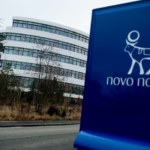By Fraiser Kansteiner Nov 14, 2024 2:13pm

As sales of Novo Nordisk’s GLP-1 drugs for diabetes and obesity continue to soar, the Danish drugmaker is once again adjusting its insulin production priorities.
“To address our current capacity constraints and reach more people with diabetes with our products in the future, our human insulin, which is currently delivered in pens and vials, will—over time—be transitioned to vials only,” a Novo Nordisk spokesperson told Fierce Pharma Thursday.
These days, many diabetes patients in wealthier nations rely on analog insulin to control their blood sugar. Compared to human insulin, analog insulin tends to work faster and can be modified to alter the duration of action after injection. Analog insulin is often more expensive than human insulin, making the latter type more common in low- and middle-income countries (LMICs).
Analog insulin will still be available in the pen format under Novo’s plan.
Back in June, The New York Times reported that South Africa’s public health system had run out of human insulin pens, which dovetailed with Novo’s decision not to renew its contract to supply the much-needed diabetes medication to the country after the agreement expired in May.
At the time, the NYT noted that no other company had bid on the contract, which covered supply of 14 million pens for three years at roughly $2 per device. Novo had been supplying insulin pens to South Africa since 2014, the report added.
“We appreciate the impact our portfolio decisions will have on patients in South Africa and understand the frustration this may cause,” Novo’s spokesperson said Thursday. The company is engaged in talks with local health authorities to make sure patients continue to have access to treatment, the spokesperson added.
While insulin has formed the backbone of Novo Nordisk’s business for decades, the company is putting ever greater emphasis its newer generation of GLP-1 receptor agonists these days. Amid this shift, Novo has been laser-focused on boosting manufacturing capacity for its GLP-1s thanks to rampant demand for Ozempic for Type 2 diabetes and Wegovy for weight control.
In 2024’s third quarter, Novo’s total insulin sales clocked in at 12.5 billion Danish kroner ($1.8 billion). Semaglutide-based Ozempic, by comparison, generated 29.8 billion kroner (around $4.3 billion), while Wegovy chipped in 17.3 billion kroner ($2.5 billion).
Late last month, the FDA revised its online drug shortage database to list the 0.25-mg starter dose of Novo’s semgalutide med Wegovy as available. The starter presentation was the last dose of either Wegovy or its sister medicine Ozempic to be listed as in shortage by the U.S. regulator.
That development came amid a global push to expand GLP-1 capacity, with Novo allocating $6.8 billion for manufacturing capital expansions this year. Besides growing its own production network, Novo’s holding company is in the process of purchasing CDMO giant Catalent. When that deal closes, Novo Nordisk is slated to acquire three Catalent fill-finish sites from Novo Holdings for $11 billion.
Meanwhile, Doctors Without Borders earlier this week called on three major insulin manufacturers—Eli Lilly, Novo Nordisk and Sanofi—to immediately cut the prices of their insulin pens to $1 per device in LMICs, citing cost as a major barrier to pen adoption in less-wealthy nations.
Source:
Fierce Biotech






